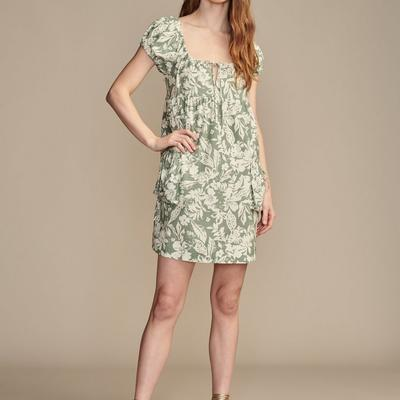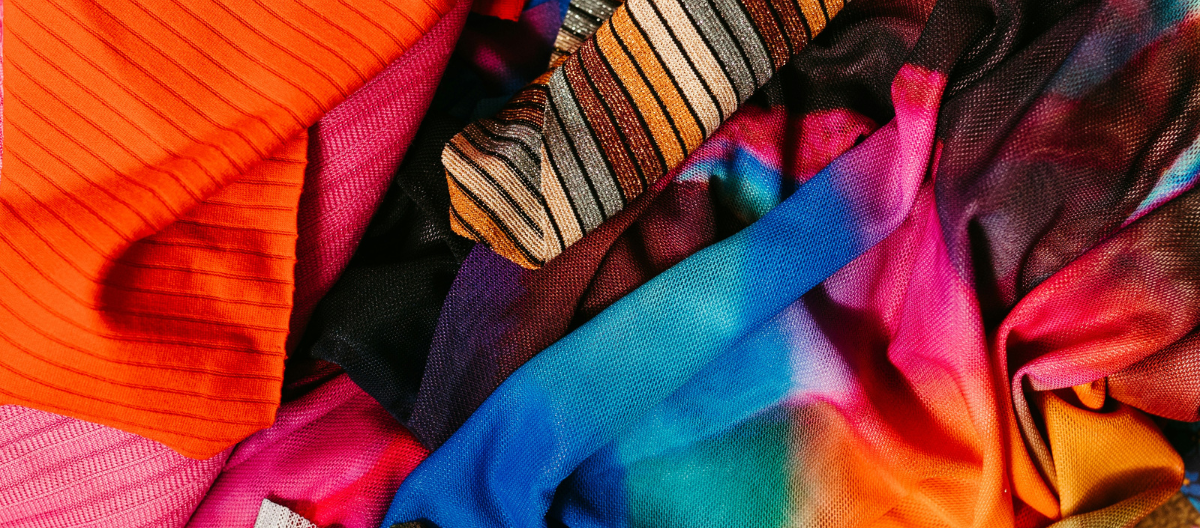Hey Diva dressing fans! When the items we love coincide with brands we work with, Diva dressing will use Paid Links in our articles. If you decide to click on these links and purchase the product, we get a small commission. Our Opinions Are Our Own, but we do add Paid Links as a way to offer these products at no added cost to our readers. Want to know more? Click Here to check out our Terms of Use anytime!
Future of fashion is leaning heavily toward sustainability, and one of the most significant developments is the rise of innovative, eco-friendly fabrics. As the global fashion industry confronts its environmental impact, including pollution, waste, and excessive water consumption, the quest for sustainable alternatives is more critical than ever. Enter the next generation of sustainable textiles, materials designed to reduce environmental damage without sacrificing style or performance.
Bio-Based Fabrics
Bio-based fabrics are produced from renewable plant or animal resources, making them a promising alternative to synthetic materials derived from fossil fuels.
- Organic Cotton: Organic cotton is grown without synthetic pesticides or fertilizers, reducing harmful environmental impact. It also uses less water and improves soil health through sustainable farming practices.
- Hemp: Hemp has been used for centuries in textiles, but its recent resurgence is due to its sustainable qualities. Hemp requires minimal water, grows rapidly, and helps regenerate soil. The resulting fabric is strong, durable, and breathable.
- Bamboo: Bamboo is a fast-growing plant that can be turned into a soft and lightweight fabric. It is highly renewable, requires little water, and doesn’t need pesticides to thrive. While traditional bamboo production can sometimes involve harsh chemicals, more eco-friendly processes are emerging.
- Tencel/Lyocell: Made from wood pulp (typically eucalyptus, beech, or spruce trees), Tencel is produced through a closed-loop process where almost all solvents are recycled. This fabric is not only sustainable but also soft, breathable, and biodegradable.
Recycled Materials
Recycling has become a key player in the push for sustainable textiles. By reusing materials that would otherwise end up in landfills or the ocean, brands are helping reduce waste while creating stylish new products.
- Recycled Polyester (rPET): Made from post-consumer plastic bottles, recycled polyester is gaining traction as an alternative to virgin polyester, which relies on fossil fuels. Recycled polyester reduces plastic waste and energy consumption, although it still releases microplastics when washed. Brands are working on solutions to minimize these effects.
- Recycled Nylon: Similar to recycled polyester, recycled nylon is made from post-consumer waste, including old fishing nets, carpets, and fabric scraps. It offers the same strength and flexibility as virgin nylon but with a significantly lower environmental footprint.
- Recycled Wool and Cotton: Textiles made from recycled wool and cotton involve collecting and reprocessing old garments or textile waste. This process reduces water usage and helps divert textiles from landfills.
Lab-Grown Fabrics
Lab-grown fabrics are at the forefront of textile innovation, providing a glimpse into the future of sustainable materials. These fabrics are engineered in laboratories and offer a highly controlled and efficient production process, often with fewer resources and less waste.
- Lab-Grown Leather (Mycelium Leather): One of the most exciting developments is the production of leather from mycelium, the root structure of mushrooms. Companies like MycoWorks and Bolt Threads are pioneering this technology, creating leather-like materials that mimic the feel and durability of traditional leather without the environmental impact of raising livestock.
- Lab-Grown Silk: Companies like Bolt Threads and Spiber are also producing lab-grown silk by replicating the DNA of silkworms. This creates silk without the need for silkworm farming, reducing harm to animals and cutting down on water and energy consumption.
Regenerative Fabrics
Regenerative fabrics are sourced from farming systems that focus not only on sustainable practices but also on regenerating and revitalizing ecosystems.
- Regenerative Wool: Some wool producers are now adopting regenerative farming techniques that enhance soil health, increase biodiversity, and sequester carbon. This approach allows for the production of high-quality wool while improving the land’s overall health.
- Regenerative Cotton: Like regenerative wool, regenerative cotton farming emphasizes practices like crop rotation, minimal tillage, and composting, all of which restore soil health and promote biodiversity. These techniques help to grow cotton more sustainably and with a lower carbon footprint.
Zero-Waste and Circular Fabrics
The fashion industry is embracing circular economy principles, which focus on designing products with their entire lifecycle in mind. The goal is to create fabrics that can either be reused, recycled, or composted at the end of their life.
- Zero-Waste Pattern Cutting: Some designers are adopting zero-waste cutting techniques, where fabrics are cut and sewn in a way that produces little to no waste. By designing patterns that utilize every inch of material, brands are reducing waste and making fashion more sustainable.
- Cradle-to-Cradle Certified™ Fabrics: These fabrics are designed to be safe for both people and the planet throughout their lifecycle. They are made from biodegradable or recyclable materials, ensuring that, when no longer needed, they can be composted or repurposed without causing harm to the environment.
Innovative Natural Alternatives
Some of the most creative sustainable fabrics come from unexpected natural sources, offering a glimpse into a world where fashion can be both innovative and eco-friendly.
- Pineapple Leather (Piñatex): Piñatex is a leather alternative made from the fibers of pineapple leaves, a byproduct of the pineapple harvest. This material is not only sustainable but also provides additional income to farmers who would otherwise discard the leaves.
- Orange Fiber: Made from byproducts of the citrus juice industry, Orange Fiber transforms what would be waste into a luxurious, silk-like fabric. This innovative textile is biodegradable and ideal for high-end fashion.
- Banana Fibers: Similar to pineapple leather, banana fibers are extracted from the stems of banana plants. The fibers are strong, durable, and biodegradable, making them an ideal alternative to traditional textiles.
- Seaweed Fabric: Known for its rich mineral content and skin benefits, seaweed is now being incorporated into textiles like SeaCell™, which combines seaweed with cellulose to create soft, breathable fabrics.
Waterless and Dye-Free Technologies
Traditional fabric dyeing is water-intensive and contributes significantly to pollution. To combat this, many brands are turning to innovative dyeing and water-saving techniques.
- Waterless Dyeing: Technologies like DryDye™ and AirDye™ are leading the way in waterless dyeing. These processes use little to no water while applying color to fabrics, drastically reducing water pollution and waste.
- Undyed Fabrics: Some brands are choosing to skip the dyeing process altogether by using natural, undyed fibers. This approach reduces the need for harmful chemicals and water in production.
Role of Technology in Sustainable Fabrics
The advancement of technology is crucial in the development of sustainable textiles. AI, 3D printing, and blockchain technology are all playing a role in creating a more transparent and eco-friendly fashion industry.
- AI and Machine Learning: AI can be used to optimize fabric production processes, reducing waste, energy consumption, and resource use. Machine learning algorithms can help predict demand, ensuring that only necessary materials are produced.
- 3D Printing: 3D printing technology allows for the creation of custom-fit garments with minimal waste. By printing fabric directly, companies can reduce excess material and produce on-demand clothing, limiting overproduction.
Here are some products that can help
Lucky Brand Pintuck Bib Blouse $20.99

Lucky Brand Pintuck Pleasant Blouse $20.99

Lucky Brand Floral Printed Ruffle Mini Dress $20.99
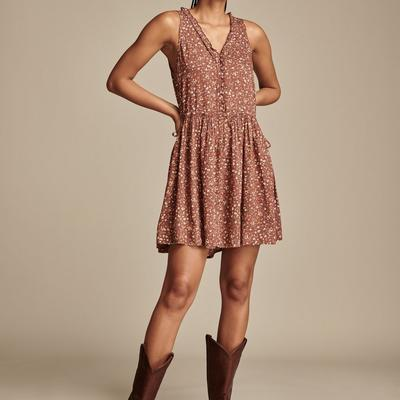
Lucky Brand Short Sleeve Smocked Blouse $24.49
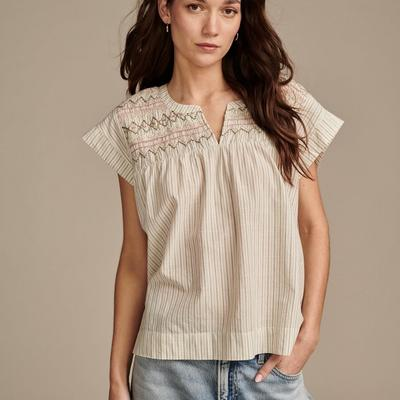
Lucky Brand Relaxed Surplus Shirtdress $24.49
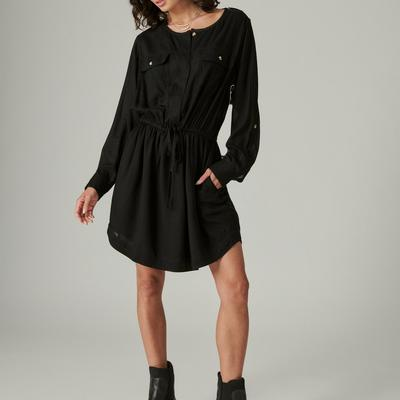
Lucky Brand Short Sleeve Market Dress $27.99
